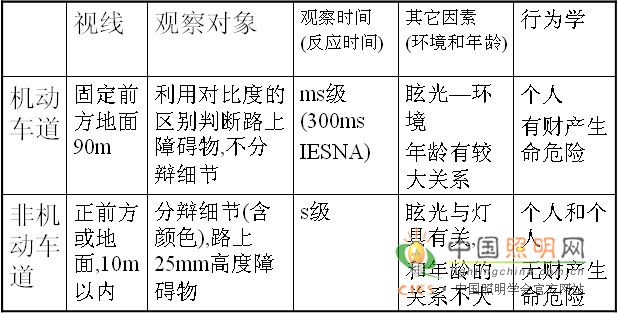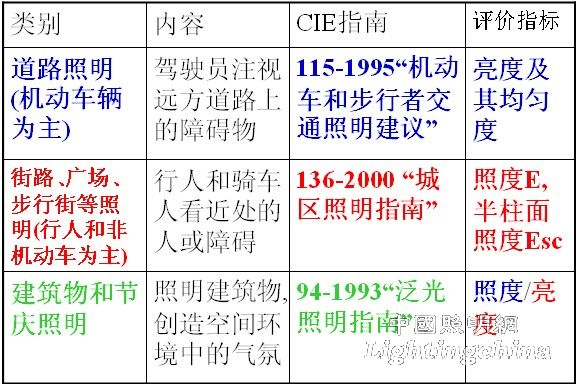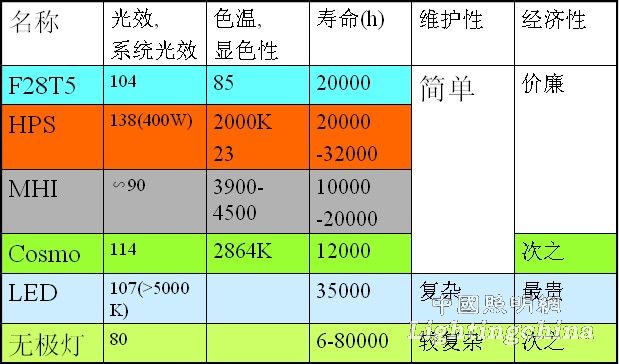I. Basic requirements for road lighting sources There are different requirements for motor vehicle lanes and non-motor vehicle lanes.
Visual work on two roads: 
Classification of urban lighting

The source of road lighting requires lighting requirements:
1) faithfully reflect the situation of each observed object in the scene, and hope to exaggerate, but do not narrow the difference;
2) Meet the requirements of the subject's observation;

Economic requirements:
3) long life (light decay and electrical accessories);
4) Economic (good value for money) is good;
5) Maintainability (convenient maintenance).
The specific requirements (below DOE) stipulate:
Luminous flux:
Requires the luminous flux emitted by the luminaire: 2300 lm or more ∴ The luminous flux of the light source is at least 4000 lm left.
Luminous efficiency: the higher the better.
Color temperature: no regulation.
Color rendering: no regulation.
Lifespan: outdoor residential area and commercial 35000h.
The list of light sources currently meeting this requirement is the comparison of the highest level products below. 
2. LED
1. Note the difference between the device and the luminaire 1) The indicators of the luminous flux and luminous efficiency of the LED chip factory are all at Tj (junction temperature) = 25 ° C and pulse current (20 ms) (ie, the ∽ current is 0 Time) data.
Non-working data 